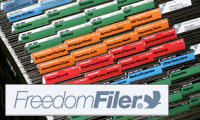Getting to Good Enough is coming back!
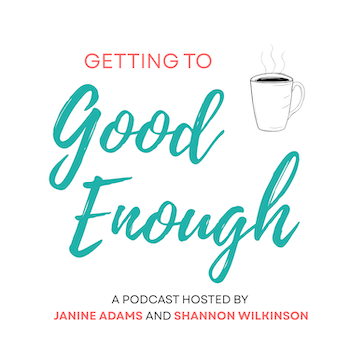
From 2018 to 2023, life coach Shannon Wilkinson and I co-hosted a weekly podcast about letting go of perfectionism so you can do more of what you love. That podcast was called Getting to Good Enough and we published 254 episodes before we brought it to a close.
When we started in 2018, we vowed to do it until it was no longer fun. By 2023, life had started to get in the way of fun so we said goodbye to the podcast.
Shannon and I have been friends since 2001 and we stay in close touch. Earlier this year we started talking about how much we missed our weekly conversations. So we decided to revive the podcast and set about doing all the things (so many things!) that needed to be done to get it going again.
Technology has changed a lot since we started the podcast and we’ve shifted providers and tools. The original podcast was audio-only but nowadays video is a must. So we’ll be offering it as a video podcast as well, on YouTube. (I fully expect most people to listen, rather than watch, though.)
We published a trailer today!
The focus of the podcast remains the same, though we’re giving ourselves permission to pretty much talk about whatever we want. (Perfectionism runs through pretty much everything.) If our test run is any indication, there will be a lot of laughter, as usual. Our new tagline is “A podcast to help you let go of perfectionism so you can live life with more ease, less stress and a lot more laughter.”
Starting tomorrow, we’ll be running a “Best of” episode each week for four weeks and then on September 4, the first new episode will air. We’ll publish every Thursday, as we did before.
You can subscribe to the podcast wherever you listen to podcasts. If you’re wanting to reacquaint yourself with the podcast, you can peruse the past 254 episodes in your podcast platform or at the newly revamped Getting to Good Enough website. You can also sign up for our email list on the website so that new episodes (starting with tomorrow’s “Best of” episode) land in your email inbox as soon as they’re published.
We’re looking forward to lots of fun discussions and hope you will listen and participate!
Expressing gratitude for large and small things

Today marks the one-year anniversary of something I am immeasurably, almost inexpressibly thankful for: my husband’s heart transplant. While life-saving and life-changing, it was not an easy experience for either of us (particularly Barry!). I can’t tell you how happy I am that it’s in my rear-view mirror.
There are so many aspects of the experience to be grateful for. Now that a year has passed, it’s easy for me to think of the many things are thankful for. I’ll name just a few here:
- the donor and his family
- Barry’s incredibly talented doctors
- the amazing hospital staff
- the fact that we’d moved just a few blocks from the hospital just days before his hospitalization (which made it much easier on me)
- our friends who supported both of us throughout the journey
- his new, robust heart — he feels better than he has in years
We’re having a party today for those who helped and are looking forward to celebrating what feels like a miracle.
It’s easy for me to remember to be grateful for this gigantic thing. But it makes me reflect on the fact that there are always so many little things in our lives to be grateful for on a daily basis. I’m definitely a glass-half-full kind of person but I don’t always take the time to think about all I am grateful for.
On and off over the years, I’ve had a gratitude practice, like this one that I blogged about back in 2021.
Celebrating this important anniversary is making me want to rejuvenate a gratitude practice. I’m going to try to remember to write down one thing I’m grateful for in my Bullet Journal every day.
How about you? Could you develop a gratitude practice?
Worth repeating: Building ease with daily habits
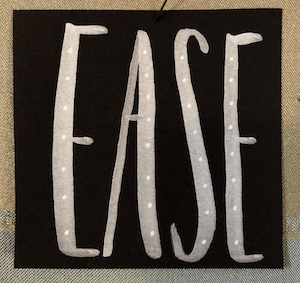
I wrote this post back in 2021. I’m still a big believer in the power of daily habits for creating ease in our lives. I’m sorry to say that my daily yoga habit is no longer as strong as it was back then, though re-reading this post is really motivating me to figure out the logistical challenges of daily yoga in our apartment and get back to morning yoga. My daily habits around my financial life are stronger than ever, I’m happy to say. And strengthening my core muscles around money has been extremely beneficial! I thought you might enjoy this reminder of how daily habits can make your life easier. What daily habits could you introduce into your life?
My word of the year for 2021 is ease. I don’t think I’ve ever had a more appropriate word. I’ve set the intention of trying to build more ease into my life and also use ease as a parameter around which I make decisions. It feels great.
This morning, while I was doing a gentle yoga practice, it hit me that the daily habits I’ve cultivated over the last year or more have really helped introduce a lot of ease into my life. Specifically, doing yoga every day has meant that yoga is so much easier than it was when I tried it for the first time two years ago. Not only do I know many of the poses (and I sometimes even anticipate them), they are much easier for me to do. That’s because daily practice has made me stronger and more flexible. And what 58-year-old person doesn’t love that?
Another area where daily practice has made a huge (life-changing!) difference is in my financial life. I’ve been working for myself for 25 years and it’s only been in the past six months or so that I’ve built a daily practice around tending to my finances. That has had the happy result that I’m always caught up with my bookkeeping in Quickbooks! This has been an elusive goal for many years.
The secret weapon of my financial life has been the software You Need a Budget (YNAB). (That’s a referral link…if you use it and end up subscribing, we each get a free month.) With YNAB I budget every dollar as it comes in and it’s actually fun. So every morning I actually enjoy logging in and categorizing any expenditures as well as budgeting any income from the past 24 hours. I’ve been using it since November 2018 for my business. (On January 1 of this year I took over our family’s finances in YNAB.) It took me awhile, but I’ve created the habit of entering anything that comes through YNAB into my business’s Quickbooks and double-checking periodically that everything is in sync. So I am blissfully caught up.
Thanks to daily habits (and wonderful Yoga with Adriene and YNAB), two big things that used to be real burdens for me (exercise and keeping track of finances) are now both easy and full of ease. That feels like a miracle.
Of course this can apply to so many things, including maintaining order, taking vitamins and supplements, and keeping up with email or filing. When we make something as easy as possible to do and we practice it daily, we allow ease to flourish.
I’m going to keep looking for other ways I can build ease into my life with daily practice!
You're reading a top organizing blog

Over the years, I’ve been pleased to see that this blog, which I’ve been writing for 19 (!) years, has consistently been included in Feedspot’s ranking of the Best Organizing Blogs and Websites and Best Decluttering Blogs and Websites. Feedspot updates their lists yearly and I’ve been slowly creeping my way up the rankings.
This year, the Peace of Mind Organizing blog is #4 on both lists!
I know this isn’t a hugely meaningful accolade but I love the acknowledgment of my consistent effort to blog regularly. I’ve published 1755 blog posts since I started this blog in 2006. I feel fortunate to have the opportunity to express my thoughts in such a safe place.
To all my readers: Thank you!
20th anniversary reflection: You don't have to do it alone
As I celebrate 20 years of Peace of Mind Organizing® this year, I keep coming back to this fundamental truth I wrote about in 2010. This message feels even more relevant today—both for the clients we serve and for the team approach that has become the heart of the business. Sometimes the most important lessons are worth repeating and that’s what I’ll be doing each month as part of this anniversary series.
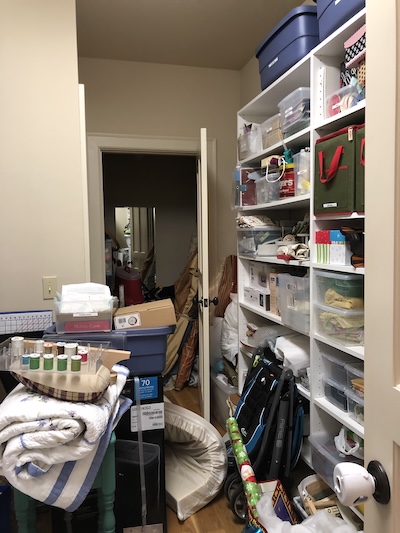
Before I became an organizer, I struggled with creating systems for getting my messy self to stay organized. I bought, read and learned from many books on organizing. (My friend, the Mississippi garden writer Felder Rushing once looked at my bookshelf and said with his distinctive Southern drawl, “Janine, you’d have a lot less clutter if you’d just get rid of these books on clutter.”)
When I decided to become a professional organizer, I started taking classes so I could bring expertise to the table. I learned, however, that I bring more than expertise to my client sessions. I bring support. If all you need is expertise, then reading about a topic might be sufficient.
But when it comes to organizing and dealing with clutter it can be really hard to get started on your own. That’s where finding a buddy or a professional to help can make a big difference.
By hiring a professional organizer you:
- Make a time commitment to working on your organizing goals
- Make a financial commitment, which can be very motivating
- Become accountable to someone
- Benefit from the organizer’s expertise
- Have some fun with it, because you have company
If your clutter or organizing challenges feel like more than you can handle alone, don’t be afraid to reach out for help. If you can afford one-on-one help with an organizer (or the help of an organizing team), believe me it will be worth the investment. If you can’t, look around the internet…there are some great lower cost options that can still give you the support you need.
Using self care to prepare for decluttering

In May, I republished one of my favorite blog posts, Self-care, which is about the importance of taking time for self care even if you feel like you should be working on decluttering and organizing your home. I suggested that you could use self-care activities as a reward for making some progress on your organizing projects.
I received a lovely email response from reader Joan Paul who suggested that self care could be an important way to prepare for the stress of a decluttering and/or organizing session.
She wrote:
Maybe filling our tank with self-care before starting a decluttering project is just as key or even more important than using it as a reward. Maybe if we are properly nurtured by our self-care we won’t be so paralyzed and overwhelmed about decluttering!
I love that way of thinking and to be honest I hadn’t thought of that way before.
Taking care of yourself is one of the most important things you can do to live a happy and healthy life. If clutter has gotten out of hand and you have difficulty addressing it, then incorporating some self care into the process (whether that’s before or after the decluttering session, or both!) can only benefit you.
Sometimes self care looks like calling in an organizer or an organizing team to jump start your activities or get it done swiftly. (I’m a huge believer in asking for help and wouldn’t have been able to survive last year’s move if I hadn’t hired organizers to get me packed and unpacked.) If you live in St. Louis, we’re happy to help you. If you live elsewhere, you can find an organizer near you at NAPO.net.
Photo by Maddi Bazzocco on Unsplash
Worth repeating: Daily exercise for the win!
I wrote this post three years ago. Since then I’ve started working with a trainer each week, which is great. But I still find it hard to get excited to exercise between training sessions. Reading my brother’s simple approach (especially the concept of any exercise being better than no exercise) is inspiring me to get busy and exercise this morning!
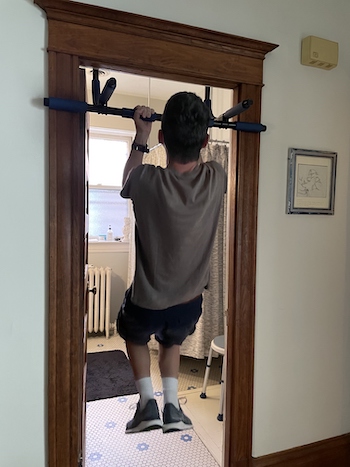
My brother, Larry, is visiting me right now. He lives in Australia, so I don’t get to see him often. Our father died last month in Walla Walla, Washington, and Larry made an emergency trip to the U.S. After the memorial service, he came back to St. Louis with my husband and me.
We’re having a great time hanging out and catching up. And we’re even learning a thing or two from one another. One thing that Larry’s really impressed me with his daily habit of doing pull ups. Larry is a slender, strong 63-year-old man. He’s genetically inclined to being slender but he also has muscles. And now I know why.
Every day, Larry does ten pull ups.
He tells me that he started his pull-up routine in 1995. He started with only four, which was very easy for him to do. He slowly increased the number and now he’s up to ten. Along the way, he’s created a few rules for himself. If he can’t do all ten because he doesn’t feel strong enough, he lets himself take a break. He can make up the difference a little later or, barring that, he’ll make up the difference the next day.
When I asked Larry about his daily exercise habit and how he’s managed to keep it up for literally decades, he said,“It’s easy. That’s the beauty of it. I knew that I had to be flexible about it because I’d lose heart if I tried to force myself to do something that was too difficult. I knew that if I could do it every day it would be good for me. And it’s not something that’s impossible to do.”
There are so many things I love about this:
- His goal is realistic
- He builds some flexibility into it
- He allows himself to fall short but makes up for it
- He’s reaping visible benefits from this daily habit
I feel the same way about my daily yoga practice, which has fallen by the wayside due to a variety of circumstances. But Larry’s inspiring me to get right back on it and allow myself to just do a little bit of yoga and count it as a success. I know daily yoga is beneficial. (I didn’t miss a day for over a year during the pandemic.) My promise to myself is that I’ll let it be easy.
Larry is reminding me that when it comes to exercise (and really almost everything) any effort is better than no effort. His daily ten pull ups takes him literally a couple of minutes. (It’s fortunate that we happen to have a pull up bar just like the one he has at home.) And he’s definitely reaping the benefits!
ETA: I let Larry know I had re-published this blog post and he told me that he’s upped his game. He wrote, “Have I told you I’ve expanded my routine? So now I do 10 pull ups with arms wide, followed by 10 curls with hands close together on the bar. Basically, your standard pull up. Then I do a 60 second plank, 60 second leg lift, 60 second plank. And as before, I’ve got all day to do them. But the pull ups must be done immediately after the arms stretched wide pull ups.” I’m truly impressed by his dedication and how he’s built on his previous successes. And the guy is turning 66 next month!
Links
- Organize Your Family History
- NAPO St. Louis
- Are you interested in becoming a professional organizer?
- Shannon Wilkinson, life coach
- National Association of Productivity and Organizing Professionals
- Ravelry
- Getting to Good Enough podcast
- Peace of Mind Spending
- Institute for Challenging Disorganization







